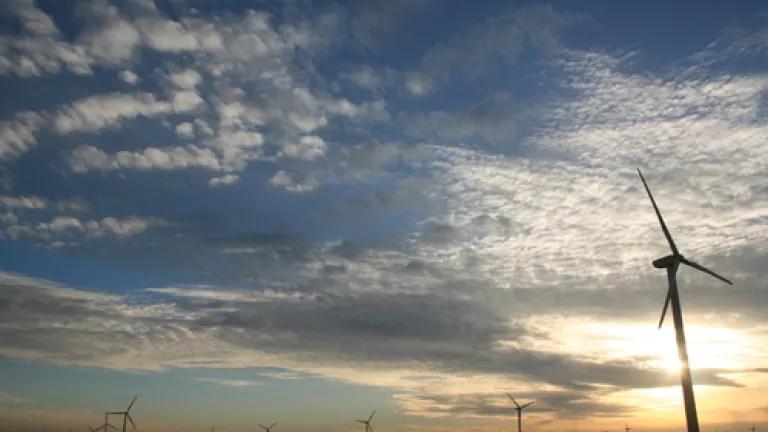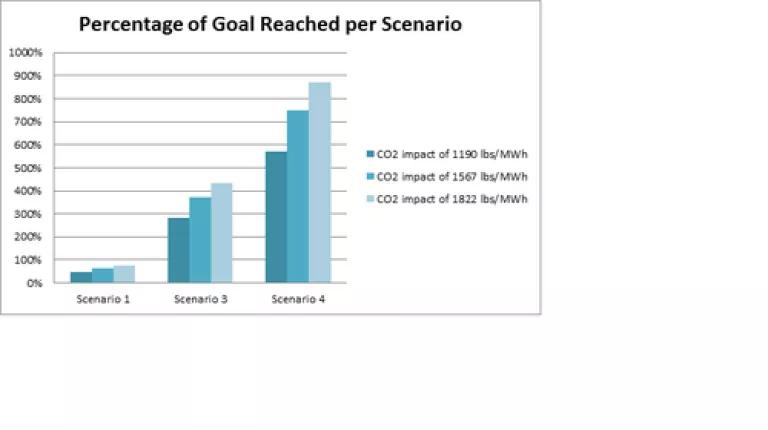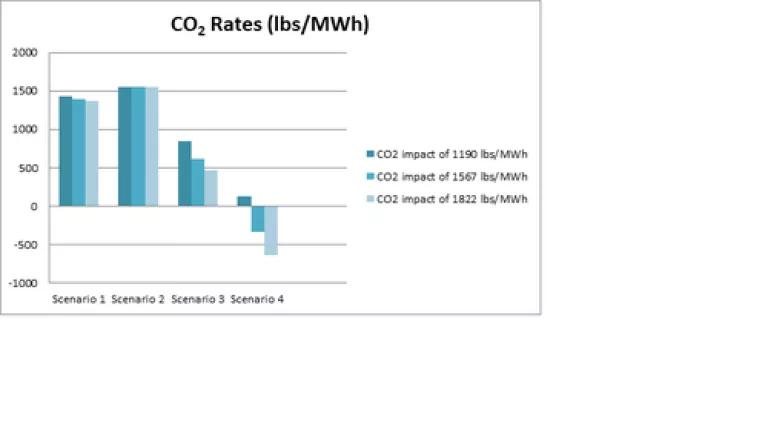The Benefits of Wind Energy in Iowa: A Valuable, Reliable Crop for This Agricultural State

Iowa wind continues to blow away critics of the potential for clean energy to lead to economic growth! Last week Governor Branstad announced that MidAmerican Energy, the largest utility in the state, plans to add 67 wind turbines in Adams and O’Brien counties by the end of 2015, equaling 162 megawatts (MW) of new wind generation capacity. In addition, MidAmerican will purchase the blades of those turbines from Siemens, manufactured in Fort Madison, multiplying the benefits to the state. This is a further step towards compliance with the EPA’s proposed Clean Power Plan, and another step towards energy security and economic development in Iowa.
Wind farm in western Iowa, by Towle N, licensed under Creative Commons
Using Wind to Meet EPA’s Proposed Target: An Analysis
The U.S. EPA has proposed the first-ever limits on carbon emissions from our nation’s power plants. The Clean Power Plan offers a flexible, system-wide approach, in which the agency sets the targets but each state develops a plan to comply based on its own local resources and economy. Iowa’s proposed target is modest and easily achievable, requiring a reduction of only 16% in its carbon emission rate by 2030. (Expressed in pounds per megawatt-hour (lbs/MWh), the rate is the amount of carbon emitted per each unit of power produced.) Iowa can easily meet this target by taking advantage of existing clean, local resources and reducing demand through energy efficiency programs. In fact, the preliminary results of an analysis by Dan Turner, LLC, Wind Utility Consulting, PC, and the Iowa Wind Energy Association indicate that Iowa could meet and exceed its carbon reduction target using wind alone.
At the end of 2013, Iowa had nearly 5,200 MW of wind capacity installed. Today, an additional 1200 MW of wind are under development. The state leads the nation in generation from wind energy, yet it has barely scratched the surface of its estimated 570,000 MW of potential wind energy.
The analysis looked at four different scenarios:
- Scenario 1: No additional wind beyond the 1050 MW announced by MidAmerican (not including the most recent announcement);
- Scenario 2: The EPA baseline (0 MW of wind added after 2012).
- Scenario 3: Iowa adds wind at about the same rate as in 2014 and planned for 2015, an average of 500 MW per year from 2015-2029;
- Scenario 4: Iowa more aggressively adds wind, consistent with historical peaks or about 1,000 MW/year starting in 2015 and with an increasing capacity factor of 1% per year. (The capacity factor indicates the reliability of the wind in creating energy; an increasing capacity factor reflects technical improvements that make us more proficient at harnessing the wind for electricity.)
Incredibly, even with the most conservative assumptions, Iowa will be halfway to the proposed EPA target with just the completed and planned wind builds. With only moderate wind investments, at the same rate as in 2014 and 2015, we will have reached the Iowa reduction target and far surpassed it – reducing carbon emissions by a whopping 45 percent. And, in the more ambitious scenario we could potentially become carbon negative!


Graphs reproduced from Dan Turner’s presentation on the “Potential Role for Wind in Meeting 111(d)”
Wind generation could back out anywhere between 10.3% and 121.9% of fossil generation in the state. That is, by simply installing wind at rates already seen in 2008 and 2009, we can meet all of our current demand and even exceed it, selling clean energy to neighboring states and helping them to meet their targets.
The report estimates that only 2,380 MW of wind would need to be added by 2030 in order to meet EPA’s proposed goal for Iowa. That’s an average of 159 MW of wind installed annually from 2015-2029, only about a quarter of the amount of wind installed in 2014 and planned for 2015. If we look at wind as a replacement for fossil fuels rather than an addition to fossil fuel generation, we’d only need 792 MW by 2030, an average of only 53 MW annually from 2015-2029 – one tenth of the rate at which we have been installing wind in recent years.
Wind comes with so many other benefits, beyond simply meeting the EPA’s goal for the state.
Steve Lockard, CEO of the blade-manufacturing TPI Composites, pointed out many of these benefits in a September 23rd op-ed in the Des Moines Register. These were echoed by Iowa’s Governor and Lieutenant Governor in the announcement of MidAmerican’s expansion. These benefits include:
- Wind development has led to $10 billion in capital investment to date in Iowa and has created thousands of jobs (estimates range from 3,000-7,000).
- Wind energy has no fuel cost. Increased wind generation helps utilities to reduce their fuel costs, stabilizing electric rates for their customers by protecting them from volatile fuel prices. MidAmerican’s newly announced investment is expected to save customers $93 million over 10 years.
- Wind farm lease payments and increased tax revenues for local communities adds to Iowa’s economic security. A single landowner can see payments of up to $120,000 over twenty years for each wind turbine on their property. For instance, the new additions by MidAmerican in Adams and O’Brien counties are expected to provide more than $40 million in additional property tax revenues over the next 30 years, in addition to annual landowner payments. Of about $411 million in landowner payments and property taxes across the U.S., $27.5 million is generated in Iowa alone, every year.
- These taxes and other revenues for rural communities benefit local services, including schools, health care facilities, and roads. Economic activity increases in areas with wind farm development, especially during construction as workers spend money in local communities. According to IWEA, 216 wind turbines have completely transformed Pocahontas County. The turbines comprise almost a tenth of the total county tax base – the county has received over $3 million in tax revenue from these wind turbines in just three years – and local school districts benefitted while some residents saw their tax bills decrease as a result of the county’s economic success.
- Iowa is one of two states that have the entire supply chain for wind turbines. There are 14 manufacturing facilities in Iowa that make components of wind turbines, employing thousands of skilled workers and revitalizing communities like Newton.
The Clean Power Plan presents an incredible opportunity for Iowa.
The amazing economic development in Iowa due to the wind development can continue, meeting Iowa’s needs and helping our neighbors to meet theirs.
According to Environmental Entrepreneurs, Iowa boasted 43,000 green jobs in 2011, and was one of the top five states in clean energy job creation in the fourth quarter of last year. These are not projected jobs – these jobs exist. Furthermore, NRDC looked at the impact of our own, more aggressive proposal on jobs and electricity bills. In reducing Iowa’s carbon pollution by 9.2 million tons below 2012 levels in 2020, and by taking advantage of the immense potential for expanded renewables and energy efficiency, household and business customers could save $235 million every year on their electricity bills. The average Iowa household would save $76 per year. An estimated 2,500 jobs in energy efficiency – including electricians, carpenters, and industrial truck drivers - would be needed to make houses and office buildings more efficient.
Wind has already reduced carbon emissions by 14%, putting Iowa in a good position to meet EPA’s new carbon reduction plan. While Iowa has a range of options to comply with the plan, Turner and Wind’s analysis shows that wind alone can cost-effectively bring Iowa into compliance. Rather than hurting Iowa’s economy, by complying with the Clean Power Plan and furthering our commitment to clean energy we can continue to garner (as Governor Branstad said) “long-lasting benefits and [make] Iowa a competitive economic force not only in the United States but also in the world.”
